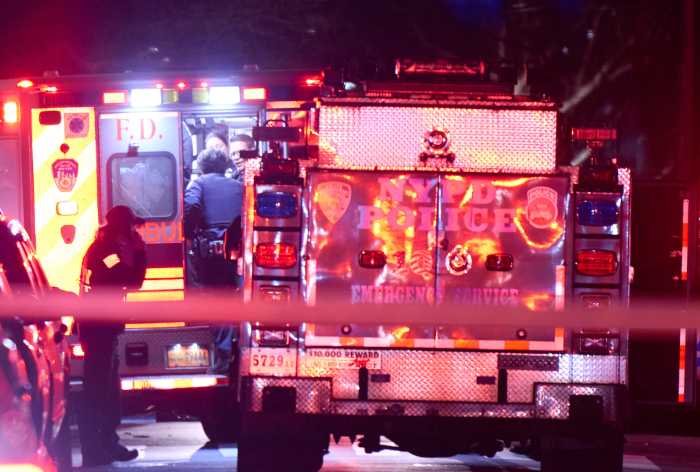By Patrick Donachie
Students, faculty and parents at York Early College Academy have battled bureaucracy for the past several years in an attempt to have gates installed in the school’s yard to help ensure student safety, Now, the gates may be built due to allocated funding from the office of the Queens borough president.
“I see our kids show up every day. And not just that, but they’re producing incredible work,” Noah Angeles, the principal of the school, said. “Because they’re here all the time, we want them to have a safe environment.”
York Early College Academy is co-located in the same school campus as Junior High School 8 and the Emerson School at 108-35 167th St. in Jamaica. The school includes students from 6th to 12th grade and it enrolls more than 600 students with a 96 percent daily attendance rate. The school partners with York College to offer the high school students college courses.
Joanne Franco, the parent of a student at York Early College Academy, said she first noted the need for gates in the school yard about three years ago. Teachers would often find broken bottles and at one point a bulldog ran into the yard while students were at recess. No one was injured, but Franco worried that an animal might hurt a student.
“The teachers were standing at the gate, making sure no one was approaching the children,” Franco said. “Not having those gates made our teachers become bodyguards.”
A spokeswoman for Queens Borough President Melinda Katz said the borough president had allocated $350,000 of her FY17 discretionary capital funds to the DOE and School Construction Authority to cover the “full projected costs of fencing to enclose the schoolyard of the building” that includes the three schools.
The yard at York Early College Academy has two direct exits to the street, along with several exits onto fenced-off handball and basketball courts as well as a separate exit into Latimer Playground, a public park that has its own exit to the street. Franco wanted additional gates for the exits to the street as well as a gate that would separate the playground from the school. Members of the student government even made a video describing the need for gates that they presented at a District 28 Community Education Council meeting in April.
“We saw the dangers of the open environment,” Ayush Negi, a tenth grader, said about the gates. “There could be animals going through.”
The Department of Education recently installed gates at two entrances on a fence separating the school from the yard, though Franco said the gates did not help when students were in the yard for recess or physical education.
According to Franco and Maria Kaufer, a vice president on District 28’s CEC, there had been long-standing confusion between the DOE and the city Parks Department about which agency would be responsible for building and maintaining new fences or gates on the land.
“If you’re neighbors and you have one fence, who’s responsible for it?” Franco asked.
A spokeswoman for Katz said the fencing would prevent unauthorized access onto the school property from the playground as well as from public streets. The time line for designing and constructing the fences is still to be determined, according to the borough president’s office.
The school has also been trying to get funding for a fence to surround a patch of ground near the doors where students are dismissed from school. Angeles said the ground was often used as a dumping ground for garbage, including pieces of wood with rusty nails sticking out of it. He said it was a safety hazard for his students.
“We have our children here,” he said. “When you look at it from a standpoint of health, it’s a breeding ground for mosquitoes. It’s a breeding ground for rats.”
A neighboring supermarket has pledged to help fund a community garden on the grounds if the DOE can build a fence for the area.
Reach reporter Patrick Donachie by e-mail at pdona



































